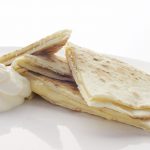When you or a loved one is following a gluten-free diet, it’s important to know how to substitute foods with gluten so that you don’t have any dietary upsets. Gluten has a number of effects on the body. Some people avoid gluten because they suffer from Celiac disease. Others cut out gluten due to other auto-immune or allergic reactions. Here are some great substitutes that make it easy to stick to this diet.
The first thing to do is look for gluten-free products at your local supermarket. Gluten-free flour is something you will need to keep in your kitchen, for example. Some foods are naturally gluten-free. They include rice, corn, buckwheat, quinoa, soy, flaxseed, sesame, potatoes, veggies, fruit, milk, eggs, meat, poultry, fish, legumes, nuts, fats, and oils.
When you want to make a dish with pasta, try substituting with buckwheat, rice, or corn noodles. Semolina can be substituted with polenta. Quinoa is a great substitute for couscous. Choose corn flakes for cereal and gluten-free granola. Beer also naturally contains gluten, so make sure that you choose a gluten-free variety. The same goes for bread of course.
If you are wondering what kinds of flour you can use, there are plenty of choices. Some examples, include chestnut flour, coconut flour, chickpea flour, hemp flour, almond flour, and quinoa flour to name a few. It might be best to try a few to find out which one you love the most.
When cooking, remember to add extra liquids to your foods and allow any dough to rest. Resting gives the dough a chance to thicken. Cookie dough and pasta should be processed immediately to prevent any drying out.


Be the first to post a comment.